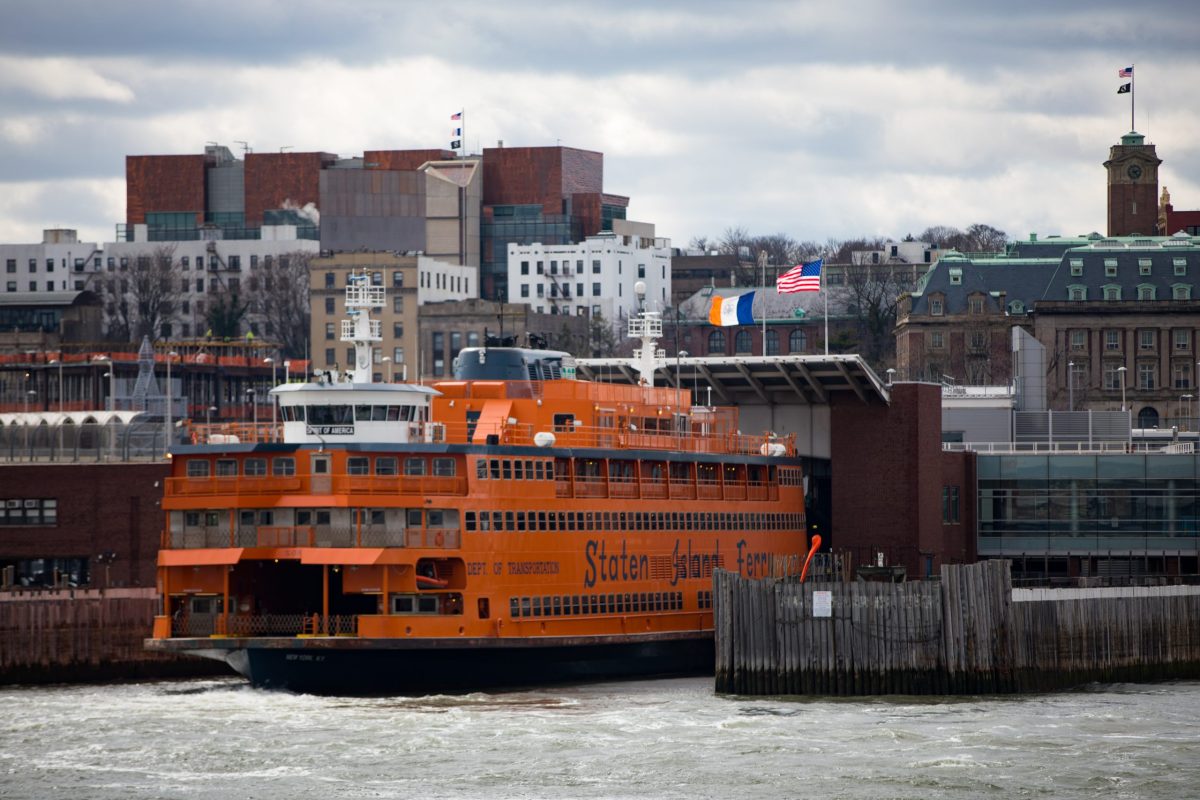The MTA is not the only transit agency making cutbacks in the thick of the COVID-19 crisis.
The Staten Island Ferry will be dialing back service, not solely for ridership numbers, the city Department of Transportation said, but on account of half their scheduled employees calling out sick and four confirmed cases among staff since the epidemic began.
While DOT will continue serving essential workers but came to the decision to reduce potential exposure to staff after discussions with the two unions involved – Marine Engineers’ Benefit Association (MEBA) and the International Organization of Masters, Mates, and Pilots (MMP) – according to Commissioner Polly Trottenberg.
“We know how much Staten Islanders rely on the ferry, but during this COVID-19 pandemic, this hourly schedule will reduce the demands on our workforce and give our staff more time to thoroughly clean and sanitize the vessels and terminals,” Trottenberg said.
One upside of the reductions? DOT says it will allow for more opportunities for the vessel to be sanitized.
But ridership has made a significant plummet from a March daily average of 75,000 riders to 11,000 last week, or only 15%; DOT expects further decline as the crisis continues and non-essential workers remain at home.
“Our top priority at the Staten Island Ferry is always safety — of the traveling public and our own workforce,” Captain Jim DeSimone, Chief Operating Officer for the Staten Island Ferry, said.
According to DOT, service will now be on the hour from St. George Terminal and on the half-hour from Whitehall Terminal starting at the stroke of midnight on March 30.
As for water transit service across the city, the NYC Ferry has made similar cutbacks as ridership has dropped about 90%, according to a spokesman.
“Due to precautions and directives put in place by the City and the State, New Yorkers are doing their part to stop the spread of COVID-19 by staying home and practicing social distancing,” a statement from NYC Ferry said. “As a result, NYC Ferry has been operating on a reduced schedule which began on Monday, March 23. NYC Ferry will continue to serve as a much-needed transit option for those critical workers who must travel.”
Their ridership figures are released quarterly and the heavily subsidized service has been under criticism elected officials such as city Comptroller Scott Stringer for not only its alleged lack of sustainability for accountability. The NYC Ferry comes with a per passenger subsidy of $9.34.
The MTA reported last week that it would cut service 30% on weekdays to nearly Saturday levels with commuter rails such as Long Island Rail Road and Metro-North maintaining peak service.
But while the agency said this would be an approach to save money and still serve essential workers, a study from Comptroller Scott Stringer contended that cutbacks to off-peak hours could negatively impact the staff reduced service still means to accommodate.
According to Stringer, about 50% of all frontline workers, 70% public transit employees, 61% of delivery and storage and 59% in building and cleaning services rely on public transit outside of the 7 a.m. to 9 a.m. rush.
But the MTA’s cutbacks are more than providing for an existing demand; headways and reductions in service have been exacerbated by significant crew shortages as workers fall ill as on the Staten Island Ferry’s employ.
Correction note: an earlier version of this story noted that NYCFerry was subsidized by 10.73 per ticket. The current figure from EDC is $9.34.



































